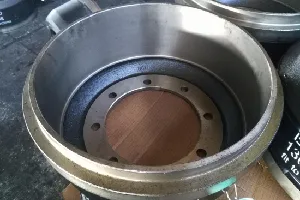
-
 Afrikaans
Afrikaans -
 Albanian
Albanian -
 Amharic
Amharic -
 Arabic
Arabic -
 Armenian
Armenian -
 Azerbaijani
Azerbaijani -
 Basque
Basque -
 Belarusian
Belarusian -
 Bengali
Bengali -
 Bosnian
Bosnian -
 Bulgarian
Bulgarian -
 Catalan
Catalan -
 Cebuano
Cebuano -
 Corsican
Corsican -
 Croatian
Croatian -
 Czech
Czech -
 Danish
Danish -
 Dutch
Dutch -
 English
English -
 Esperanto
Esperanto -
 Estonian
Estonian -
 Finnish
Finnish -
 French
French -
 Frisian
Frisian -
 Galician
Galician -
 Georgian
Georgian -
 German
German -
 Greek
Greek -
 Gujarati
Gujarati -
 Haitian Creole
Haitian Creole -
 hausa
hausa -
 hawaiian
hawaiian -
 Hebrew
Hebrew -
 Hindi
Hindi -
 Miao
Miao -
 Hungarian
Hungarian -
 Icelandic
Icelandic -
 igbo
igbo -
 Indonesian
Indonesian -
 irish
irish -
 Italian
Italian -
 Japanese
Japanese -
 Javanese
Javanese -
 Kannada
Kannada -
 kazakh
kazakh -
 Khmer
Khmer -
 Rwandese
Rwandese -
 Korean
Korean -
 Kurdish
Kurdish -
 Kyrgyz
Kyrgyz -
 Lao
Lao -
 Latin
Latin -
 Latvian
Latvian -
 Lithuanian
Lithuanian -
 Luxembourgish
Luxembourgish -
 Macedonian
Macedonian -
 Malgashi
Malgashi -
 Malay
Malay -
 Malayalam
Malayalam -
 Maltese
Maltese -
 Maori
Maori -
 Marathi
Marathi -
 Mongolian
Mongolian -
 Myanmar
Myanmar -
 Nepali
Nepali -
 Norwegian
Norwegian -
 Norwegian
Norwegian -
 Occitan
Occitan -
 Pashto
Pashto -
 Persian
Persian -
 Polish
Polish -
 Portuguese
Portuguese -
 Punjabi
Punjabi -
 Romanian
Romanian -
 Russian
Russian -
 Samoan
Samoan -
 Scottish Gaelic
Scottish Gaelic -
 Serbian
Serbian -
 Sesotho
Sesotho -
 Shona
Shona -
 Sindhi
Sindhi -
 Sinhala
Sinhala -
 Slovak
Slovak -
 Slovenian
Slovenian -
 Somali
Somali -
 Spanish
Spanish -
 Sundanese
Sundanese -
 Swahili
Swahili -
 Swedish
Swedish -
 Tagalog
Tagalog -
 Tajik
Tajik -
 Tamil
Tamil -
 Tatar
Tatar -
 Telugu
Telugu -
 Thai
Thai -
 Turkish
Turkish -
 Turkmen
Turkmen -
 Ukrainian
Ukrainian -
 Urdu
Urdu -
 Uighur
Uighur -
 Uzbek
Uzbek -
 Vietnamese
Vietnamese -
 Welsh
Welsh -
 Bantu
Bantu -
 Yiddish
Yiddish -
 Yoruba
Yoruba -
 Zulu
Zulu
leading trailing drum brake system
Understanding the Leading and Trailing Drum Brake System
The leading and trailing drum brake system is an essential component in many vehicles, particularly in older models and certain types of commercial vehicles
. This braking mechanism utilizes a pair of brake shoes that articulate against a circular drum, effectively converting kinetic energy into heat energy through friction.In a leading and trailing drum brake arrangement, each brake shoe has its unique role during braking. The leading shoe is the one that moves in the same direction as the vehicle's rotation when the brakes are applied. Due to its orientation, this shoe receives additional force, amplifying its effectiveness. The trailing shoe, on the other hand, moves against the rotation of the wheel. While it does not engage as forcefully as the leading shoe, it plays a crucial role in stabilizing the brake system and providing overall balance.
One of the main advantages of the leading and trailing design is its self-adjusting nature. When the brakes are applied, the leading shoe is pushed against the drum, generating not just stopping power but also a tendency to adjust its position, minimizing wear and improving longevity. This self-energizing feature makes it an efficient solution for vehicles, where maintaining braking performance over time is critical.
leading trailing drum brake system

Another benefit of this system is its simplicity and reliability. The drum brake assembly is less complex than some modern disc brakes, making it easier to maintain and repair. The materials used in drum brakes often have excellent durability, and when properly adjusted, they can deliver consistent performance even under heavy loads.
However, the leading and trailing drum brake system does have its limitations. One of the main disadvantages is heat dissipation. Drum brakes can overheat during prolonged use, particularly in situations such as long downhill drives or frequent stops in traffic. When the temperature increases, the loss of friction can lead to brake fade, reducing stopping power dramatically.
Moreover, maintenance can become necessary as the brake shoes wear down over time. Regular inspections and timely replacements are essential to ensure optimal performance and safety.
In conclusion, the leading and trailing drum brake system remains a fundamental part of automotive engineering, particularly in specific applications. Its self-adjusting features, durability, and simplicity make it a preferred choice in various vehicles. Understanding its operation and potential drawbacks is crucial for vehicle owners and mechanics to ensure safety and reliability on the road.
-
What Are Drum BrakesNewsJul.07,2025
-
Understanding Brake Drum MaterialNewsJul.07,2025
-
Semi-Trailer Brake Drum: A Key Component for Extreme Loads and Long-Distance TransportNewsJul.07,2025
-
Drum Brake Pads for SaleNewsJul.07,2025
-
Brake Drums for SaleNewsJul.07,2025
-
Brake Drum ManufacturerNewsJul.07,2025
-
Aluminum Brake Drums: The Future of High-Performance CarsNewsJul.07,2025
